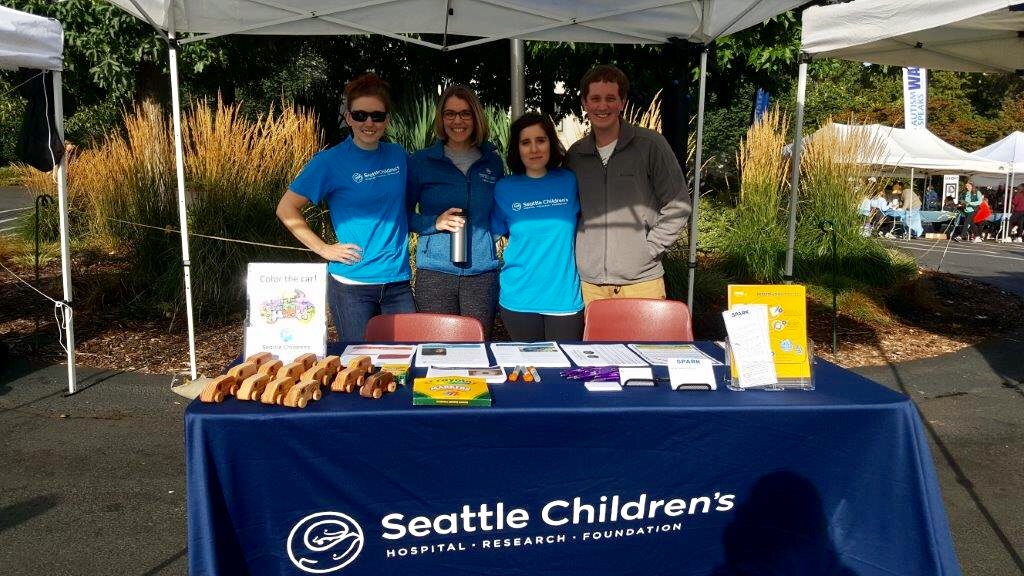EEG Sessions presents ‘EEG Journal Club’, where members of the Bernier Lab’s EEG team read and discuss an article of interest and share their thoughts on our blog. This month, the EEG team discussed the following article:
Cui, T., Want, P. P., Liu, S., & Zhang, Xin. (2016). P300 amplitude and latency in autism spectrum disorder: a meta-analysis. European Child and Adolescent Psychiatry, 2016, 1-14. doi: 10.1007/s00787-016-0880-z
The Bernier Lab EEG Journal Club recently discussed a research article in which Tingkai Cui and colleagues (2016) performed a meta-analysis on existing event-related potential (ERP) research. A meta-analysis aggregates data from previously published papers to produce robust results for a particular research question or topic. This paper integrated work from 32 studies targeted the P300 component, including data from 407 ASD and 457 neurotypical participants. Participants were presented with frequent auditory stimuli (e.g. a beep), interspersed with infrequent stimuli that differed in tone or pitch. In some experiments, a third, novel sound was included. In some experiments, participants were asked to respond to the infrequent stimuli either motorically (e.g. pressing a button) or mentally (e.g. counting silently). P300 is a neural response occurring around 300 milliseconds after the onset of a novel stimuli. P300 responses can be used to make inferences about attention and decision-making. The P300 component can be further broken down into P3a, which is elicited in the novel tone, no-response conditions, and P3b, which appears when a response to stimuli is requested.
Cui and colleagues conducted a thorough literature review using multiple library databases, selecting studies that met a specific criteria. Inclusion required that studies had both ASD and typically functioning participants and used an ERP technique to report P300 amplitude and/or latency. Cui, et al. calculated and used a standard mean difference to compare the ASD group against the typically functioning group. Cui and colleagues found that participants with ASD had reduced amplitude of the P3b component relative to comparison groups. They found no difference in P3b latency, P3a amplitude, or P3a latency between groups. Reduced amplitude of the P3b among children with ASD suggests that these groups displayed abnormal information processing – but only in tasks where they had to discriminate between and respond to various stimuli. There are a number of ways to interpret the decreased P3b amplitude in the ASD group. For example, perhaps children with ASD have fewer neural resources or perhaps they simply focus their attention on different things. In other words, perhaps children with ASD focus more on details rather than the ‘bigger picture.’ A reduced P3b amplitude may be a result of how participants in the ASD group allocated their attention.
Journal club reactions…
Brianna: As previously mentioned, one of the hallmark features of autism is its heterogeneity. The children in both ASD and control groups could have varying degrees of abilities. For example, there was no mention of IQ, which could be related to the lack of P3a in ASD groups. Cui pointed out the different paradigms used may yield different P3a components. In future replication studies, it would be wise to select one reliable paradigm that works best and test it on a large sample size. Our journal club was also curious to know if there were any correlations between reaction times and P3b effects. Because some children with autism have motor delay, we wondered if reaction time is the best behavioral measure for this type of experiment.
Caitlin: The P300 component is a very valuable asset for characterizing the attention system in autism for both low- and high-functioning children. I really liked this article because it organized potential reasons why different studies may have variable findings, including whether the experiment activated visual or auditory systems, whether the participant was required make a response, and how often “pop-outs” occur. As a scientist, we spend a lot of time trying to figure out how to build our experiments so that we capture the overall brain process, rather than the brain process only in [a specific scenario]. Although there are not enough similar papers to pick the “best” paradigms (more work to be done!), this paper helped me narrow down possible methods for us to use here in the Bernier lab.
Daisy: The result from this article is concord with past findings that ASD individual usually display an aberrant pattern in P300 component than TD. The main reason I like about article is that it nicely laid out some potential reasons of why results vary from study to study. In consideration of the heterogeneity of ASD symptoms, results vary due to the experiment paradigms they use (e.g. whether it is visual or auditory; whether participants were asked to make a response). P300 component happens rather late in the brain response stage and it usually infers the decision-making process. In the future, I think it will be a valuable information to collect when we work with clinical population in combination of social and behavioral features. A potential question that I am wondering is how P300 serve as an indicator of executive function.
